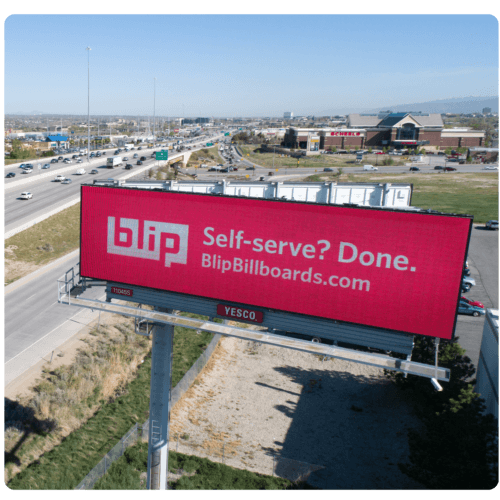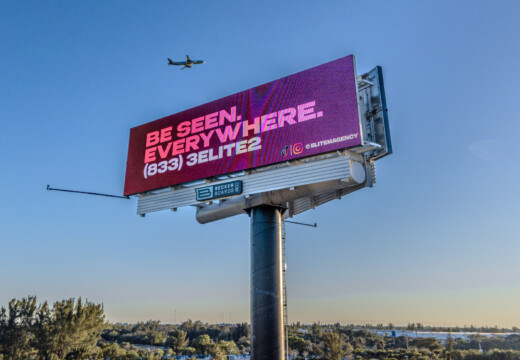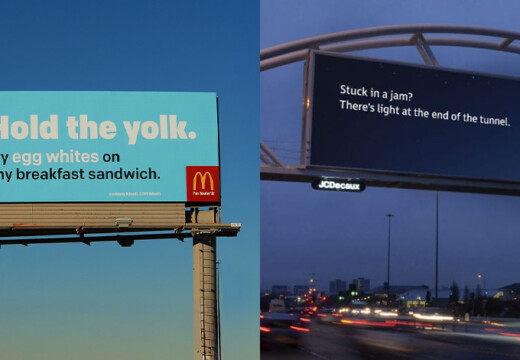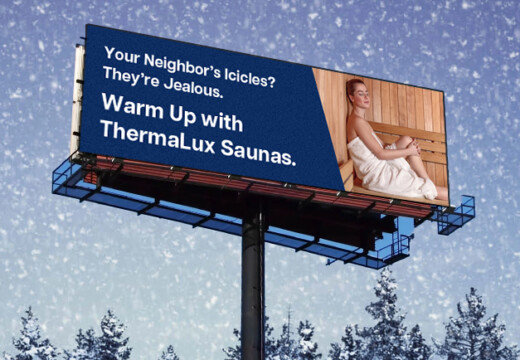
Billboard Advertising Statistics You Need to Know for 2022
We compiled 10 statistics that show how effective out-of-home advertising can be, whether you’re talking about print billboards or their digital cousins.
We’ll be honest: we can tell you all about how great out-of-home (OOH) advertising is.
But you’ll probably want a little more evidence than just our (very biased) anecdotes.
That’s why we compiled 10 informative OOH advertising statistics that show how effective this medium can be, whether you’re talking about print billboards or their digital cousins.
Take a look, and you’ll see what we’re talking about.
OOH advertising helps increase mobile click-through rates (CTR) by 15%
Mobile ads are effective – we use our phones constantly, after all – but they’re even more effective when they’ve been reinforced by seeing a billboard with the same ad or message.
Users click on mobile ads 15% more often on average when billboards are incorporated into a cross-channel marketing strategy. This is particularly true when mobile ads incorporate geotargeting, which delivers ads to users based on their location – which, coincidentally, just so happens to be a billboard’s forte.
Since CTR is a top-tier metric most marketers want to influence, a 15% increase represents a substantial uptick in potential revenue, one that can be hyper-targeted locally as well. Cha-ching.
46% of consumers researched a brand or product on Google after seeing an OOH ad
Nearly one out of every 2 adults will search online for a product or brand that they saw on a billboard or other OOH placement, according to Nielsen’s Ads Driving Online Activity Survey.
OOH advertising drives an average of 497% ROI
If you make a positive return on your investment, you’re doing something right.
If you make a 497% return on your investment, that something you’re doing right is probably OOH advertising.
On average, for every $1 spent on OOH advertising, businesses get $5.97 in product sales in return. OOH advertising not only drives purchases itself; it also reinforces your other ad spend across different channels.
We’ll take that for a dollar.
Billboards are 80% cheaper than television ads
TV gets massive reach, and you can use all sorts of fun and zany commercials to get the point across (this is one of our favs).
But TV is also very expensive – perennially one of the most costly mediums for advertising.
Billboards (especially digital billboards from yours truly) cost 80% less on average, making them a more affordable way to spread your message to a large audience.
56% of Americans have discussed an interesting or funny billboard with another person
“You see that billboard – the one with the dog dressed like Superman?”
Those types of conversations about eye-catching billboards happen all the time – and according to one study, over half of Americans have had one. That kind of word-of-mouth reach is what marketers and advertisers salivate over, and it works.
The next time you see a billboard that tickles your funny bone or makes you think, pass it along to someone else; most people already do.
OOH advertising is the 2nd fastest-growing ad medium in the U.S.
Each year, more and more businesses recognize the value of OOH advertising – which is why over the past decade, the medium has turned in the second-highest rate of growth across all advertising mediums.
We’re not saying advertising is a popularity contest, but it’s totally a popularity contest.
66% of people surveyed aged 16+ used their smartphone after viewing an OOH ad
Billboards are a great source of driving digital activations, which is why two-thirds of viewers aged 16 and above have performed an action on their smartphone – googling something, visiting a website, clicking on an ad, posting on social media, viewing a video, etc. – after seeing an OOH ad.
Almost half – 43% – also searched specifically for a brand that they saw in an OOH advertisement.
It’s almost as if we want to learn more about what we see in person…
20% of shoppers don’t make a decision to buy until the last minute while in their car
Ever see something on the road that made you decide to pull into a parking lot to buy that exact product, or shop in that exact store?
You’re not alone. According to the Arbitron In-Car Study, roughly 2 out of every 5 customers buy on impulse while in their car, often because of something they see while driving – like a billboard.
When an ad grabs peoples’ attention, it makes them more likely to shop on impulse, in addition to whatever they planned on purchasing or doing. It’s not just for restaurants or retail, either; billboards can remind people of important things to do that they’ve been putting off, like visiting the dentist or paying their taxes.
Only 7% of customers who clicked on an online ad did so because the ad was “compelling”
Online ads do work, but consumers are becoming increasingly frustrated with them – to the point where only roughly 1 out of every 6 customers who have clicked on a digital ad did so because the ad was interesting enough to warrant a click.
By contrast, 34% said their click was an accident – and 15% said they were tricked into clicking.
Billboards don’t have that problem, naturally.
Consumers trust OOH ads 46% more than digital ads on average
Finally, advertising depends on trust; the more consumers trust your brand, the more likely they are to interact with you.
But that trust also applies to the advertising medium itself – and billboards enjoy 46% more trust from consumers compared to the average digital channel.
_____
As these stats show, OOH advertising drives impactful and profitable consumer interactions. They cost less and reach more people on average than most other channels, and can be targeted precisely to location. They can also provide substantial lift and reinforcement to your other channels, which makes them ideal for the marketing mix.
Want to learn more about taking advantage of low-cost, high-reach digital billboard advertising? Check out our advertising plans and let us know what you think.


